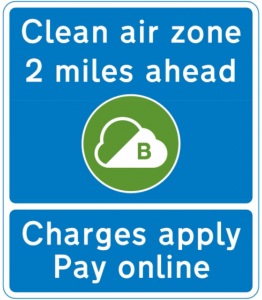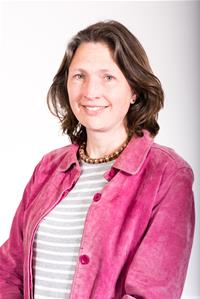Bath’s air quality is improving as polluting taxis, vans, buses and larger commercial vehicles are upgraded to drive in the city’s pioneering clean air zone, according to the first analysis of its impact since being introduced in March.
Nitrogen dioxide (NO2) levels have dropped by more than 12% compared with the same quarter in 2019 while the number of chargeable non-compliant vehicles entering the zone since its launch has dropped.

Over the same period, the percentage of compliant vehicles in the chargeable categories – taxis, vans, buses, coaches and HGVs – increased by 49%.
The report, which will go to Bath & North East Somerset Council’s cabinet next week, also shows that all but three of the 220 buses that operate on scheduled routes in the zone and more than 90% of HGVs and 90% of taxis are now compliant with its emission standards.
The first in a series which will regularly monitor the performance of the zone, the report also reveals that more than 1,000 non-compliant vehicles have so far been approved for the council’s financial assistance scheme, in addition to businesses and individuals upgrading vehicles using their own resources.
Bath’s charging clean air zone (CAZ) – the first in the UK outside London – was launched on March 15 to urgently tackle harmful levels of air pollution.
Under the scheme private cars and motorbikes are exempt but charges of £100 a day apply to higher emission buses, coaches, HGVs and motorhomes, and £9 a day for higher emission minibuses, taxis, private hire vehicles, LGVs and vans, including private pick-ups and campers.
Charges apply 24 hours a day, seven days a week.
Grants and interest-free finance are available to encourage owners of non-compliant polluting vehicles to replace them with cleaner, compliant ones.
While overall NO2 levels have dropped inside and outside the zone, the report says four places within it “have the potential to exceed government limits”.

Further investigations into these locations – Cleveland Place East junction, Dorchester Street, Victoria Buildings and Wells Road near the Churchill Bridge gyratory – are now being carried out.
Council deputy leader and cabinet member for climate and sustainable travel, Cllr Sarah Warren, pictured, said the report was very encouraging news.
“The aim of the CAZ is to improve air quality and reduce pollution which can have a devastating impact on people’s health, triggering asthma attacks and making heart and lung conditions worse. So, I’m pleased that the early indications are that it is working.
“It is, however, early days and more time is needed. Normal traffic volumes in the city have been affected by Covid and the closure of Cleveland Bridge has caused some temporary changes to traffic patterns.
“I am also concerned that despite significant progress in reducing NO2 levels, there are still four locations in the city where NO2 levels have the potential to exceed the government target we are aiming for.
“We will therefore continue to closely monitor the impact of the CAZ and our progress in quarterly reports.”
She said the aim was to meet the government target in all locations while minimising the social, economic and distributional impact of the zone on residents and businesses.
“To achieve this, our current focus is on upgrading a relatively small cohort of commercial vehicles and, in particular, older highly polluting vans,” she added.
“I am pleased to see that the number of chargeable, non-compliant vehicles entering the zone each day has dropped over the past three months and I’d like to thank those residents and businesses who have already upgraded their vehicles and reorganised their fleets or who are making plans for their vehicles to become compliant with the zone’s emission standards.
“Of course, we are also keeping a very close eye on whether non-compliant traffic is being displaced to areas outside the CAZ. Traffic monitoring indicates that volumes are still down by 9% compared with the same quarter in 2018, but we are investigating where residents and communities have raised concerns.
“Of the fifteen sites where concerns were expressed four have been found to have no significant issues and investigations into the other eleven are ongoing.”
The report will be considered by the cabinet next Thursday.



















